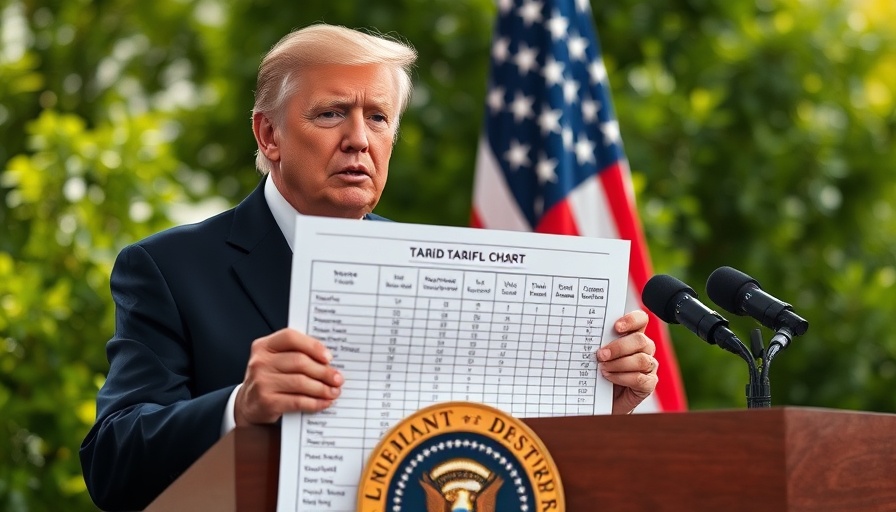
Why Canada and Mexico Were Spared in Trump's Tariff Plans
In a surprising move, President Donald Trump announced sweeping tariffs on many imports but notably excluded Canada and Mexico from this latest wave. These two neighboring countries are still wrestling with pre-existing tariffs, but the omission hints at deeper economic ties and potential negotiation strategies.
The Significance of Exclusion
Trump's decision to spare Canada and Mexico reflects an understanding of their integral role in the US economy. As Chris Tang, a UCLA professor specializing in global supply chains, noted, the absence of new tariffs might symbolize an acknowledgment of their importance amid ongoing trade negotiations. Even as the US imposes hefty tariffs on nations like China—reportedly reaching as high as 54%—Canada and Mexico maintain their feet in the trade arena, largely thanks to the USMCA.
Pre-existing Tariffs Still Apply
Although no new tariffs were added, existing 25% tariffs on most goods from Canada and Mexico remain in force for products not compliant with the United States-Mexico-Canada Agreement (USMCA). The USMCA replaced the North American Free Trade Agreement (NAFTA) and retains tariff-free treatment for agricultural products and other goods meeting specific criteria. Nonetheless, both countries still contend with tariffs on non-compliant energy and agricultural products, indicating that economic friction persists despite a lack of new measures.
The Impacts on Local Economies
Experts like Margaret Kidd from the University of Houston underscore the tangible effects on border economies reliant on international trade. In 2024, trade between the US and Mexico amounted to about $945 billion, highlighting the need for cooperative relations. Kidd emphasized that tariffs have rippling effects on local communities, particularly those situated along the border. Ignoring the economic reality could alienate vital partners, further complicating trade dynamics.
Looking Forward: A Potential Olive Branch?
Trump's omission of tariffs for Canada and Mexico might serve as an olive branch, an opportunity to ease trade tensions built over years. As Tang articulated, the interlinked nature of the US, Canadian, and Mexican economies suggests that meaningful dialogue is essential. With stakes as high as these, the hope remains that leaders can work together to secure mutually beneficial arrangements.
In conclusion, while Canada and Mexico are temporarily free from new tariffs, their existing trade realities enforce the importance of these relationships. Understanding the intricate web of tariffs can help local businesses and policymakers navigate these turbulent economic waters more effectively.
 Add Row
Add Row  Add
Add 




 Add Row
Add Row  Add
Add 

Write A Comment